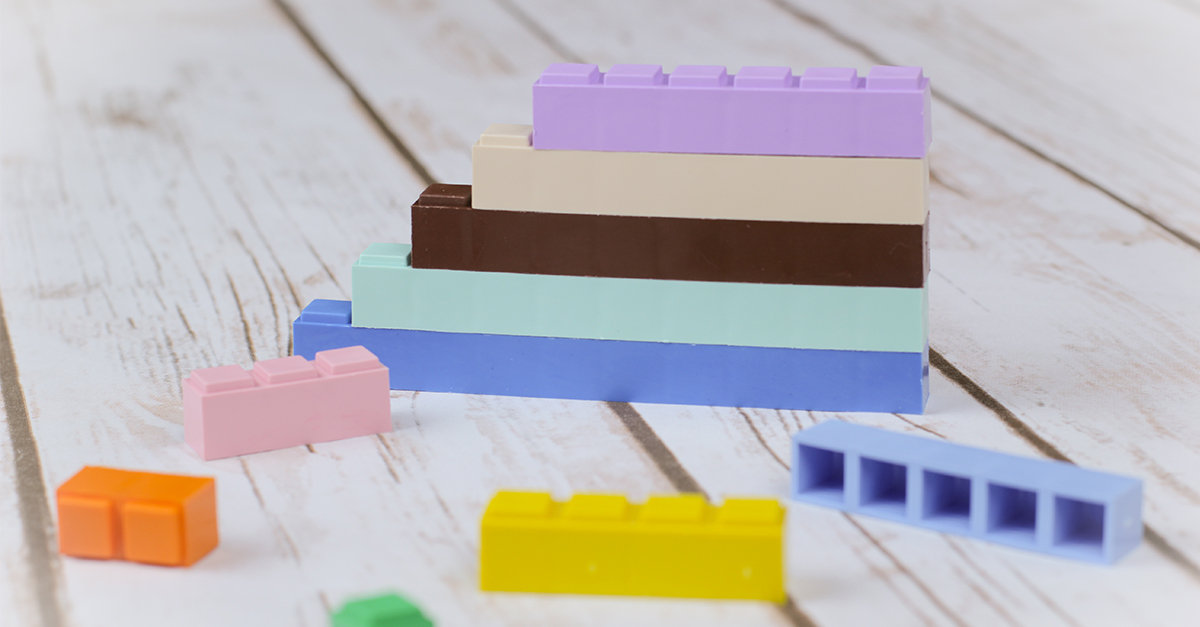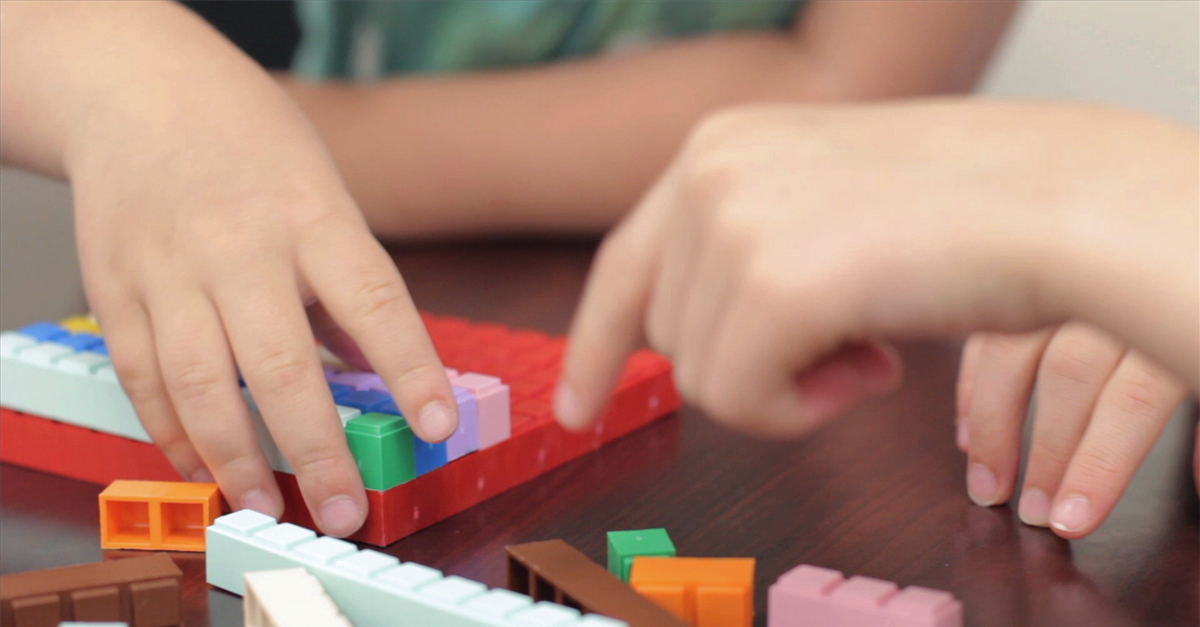
You’ve likely heard that using manipulatives is an important aspect of teaching and learning math, but you might not know what types of math manipulatives are best for your student. With so many options available these days, it can be hard to know if you’re making the right buying decision.
We want to help you choose the right materials to set your students up for success. So, we’ve compiled several advantages of using our Math-U-See manipulatives in your math instruction.
3 Major Benefits of Using Math Manipulatives
Before we get into what sets Math-U-See manipulatives apart from other options, let’s take a look at three reasons why manipulatives are so beneficial to students.
1. Manipulatives Provide a Concrete Understanding of Abstract Math Concepts
Decades worth of research has shown that people generally learn best through hands-on experiences. Think about it: when you learned how to drive or cook or swim, you likely did so by actually engaging in those activities instead of simply reading a how-to book. Why? Because it’s easier and more effective to learn those skills firsthand. The same can be said for learning math.
Because math is a highly abstract subject, most students must reason concretely before they can completely grasp math concepts. In other words, they have to explicitly see—or “experience”—the concept before they will fully understand it.
Manipulatives allow teachers and students to construct physical models of mathematical ideas. Having a concrete representation of an abstract concept helps students see the “why” and “how” behind the math, which gives them a more in-depth understanding.
2. Manipulatives Help Reduce Math Anxiety
Studies have shown that math anxiety affects nearly 50% of the U.S. population at varying levels, and it can begin with children as young as five years old. Oftentimes, the reason that people have anxiety related to math isn’t because they can’t figure out the answer to a problem, but rather due to stress and a lack of confidence in their abilities.
Using math manipulatives helps reduce math anxiety by helping students organize their thoughts and create models as they work through problems. Students gain confidence as they master math concepts, eventually completing problems easily without having to use manipulatives. Because math concepts build upon themselves and increase in difficulty over time, students benefit greatly from building a strong foundation at a young age with manipulatives.
3. Manipulatives Make Learning More Fun
While math manipulatives are tools rather than toys, they certainly have a way of livening up a lesson and making learning more enjoyable. Students love to build out math problems with brightly-colored integer blocks and other helpful manipulatives, whether they do so physically or digitally. This added element of interactivity helps motivate them to learn and promotes positive feelings toward math.
Why Choose Math-U-See Manipulatives?
Now that you know some of the main benefits of using manipulatives, let’s dig deeper into why you should choose Math-U-See manipulatives for your students.
They Promote Subitizing Skills
Subitizing is the ability to instantly and accurately recognize the number of items in a small set without counting them. For example, you can quickly determine the number of dots showing when you roll a pair of dice instead of having to count each individual dot. That’s subitizing.
Subitizing is an essential skill for children to build a strong foundation for math success, as it increases their ability to handle more complex problems in the future.
Our Math-U-See manipulatives, specifically the Integer Blocks, help students develop subitizing skills because each block has its own identifying color (ex: the 8-block is brown, the 6-block is purple, etc.). They also make subitizing simpler because each block has ridges that help show the number it represents. For example, the four block has three ridges that divide the block into four smaller cubes, making it clear that the block represents 4.
They’re Versatile and Consistent
There are many different types of math manipulatives available to teach various mathematical concepts. However, research has shown that using the same manipulative consistently over time enhances student learning in mathematics.
Using a variety of manipulatives can be far more detrimental to your student’s learning than advantageous. That’s because each time a new set of manipulatives is introduced to a student, their learning curve starts over again, pushing them backward. Using the same set of manipulatives over the years avoids this issue and encourages continuity of understanding.
Math-U-See manipulatives were thoughtfully designed to be used for multiple levels. Of course, the Integer Blocks are great for illustrating early mathematical concepts like place value and addition, but they also feature depressions on the reverse side to show inverse operations and negative numbers. You can use our Algebra/Decimal Inserts with the blocks to demonstrate complex algebraic processes like polynomial factoring.
Your student doesn’t need a treasure trove of different manipulatives—they just need one effective tool that they can use over and over. Math-U-See manipulatives illustrate more mathematical concepts than most other math manipulatives, which saves you money and serves your student well in the long-run.
They’re Available in a Digital Format
While we don’t recommend replacing physical manipulatives entirely with virtual alternatives, we recognize the benefits that digital manipulatives bring to the table.
Our award-winning Math-U-See Digital Manipulatives can be used to demonstrate various concepts and help with problem-solving just like our physical blocks, but they’re far easier to use while learning on-the-go. They’re also a great option when you simply want to try something new in your math lessons.
You get full access to the digital manipulatives in the Digital Toolbox when you purchase a Math-U-See Digital Pack. However, if you have yet to purchase a Digital Pack, you can make a free account at digital.demmelearning.com to try the Digital Manipulatives out for yourself first!
Incorporating Math-U-See manipulatives into your instruction will help your students make positive strides in their mathematics education over the years.




As a homeschooling mom of 3, I heartily recommend getting several sets of manipulatives. My boys have all graduated now, but we used Math-U-See with great success. You also need the skip-counting songs. I attrubute these MUS manipulatives with helping me, as an adult, with finally helping me to overcome discalculia issues, which had plagued me for years. Math-U-See was one reason for our homeschooling success!